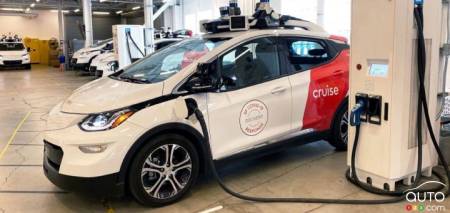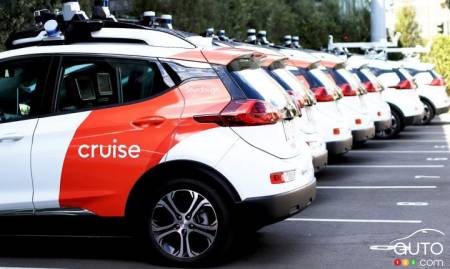Self-driving vehicles are a thing of the past, and some are currently being tested in certain parts of North America. Such is the case in San Francisco, where Cruise, the General Motors (GM) subsidiary specializing in this field, operates a fleet for testing purposes.
Five days ago, the state of California gave Cruise and rival Waymo permission to operate vehicles there around the clock and charge passengers for the service.
The next day, at least 10 of the vehicles, were stuck in traffic at a busy intersection in the North Beach neighborhood.
"One of them was stopped at the top of the hill for no apparent reason" witness Valerie Jacobson told NBC Bay Area. The incident coincided with a nearby music festival in Golden Gate Park. Cruise blamed the festival for interfering with the cars' network connections.
A large festival caused wireless bandwidth issues that delayed connectivity to our vehicles. We are actively investigating and working on solutions to prevent this from happening again. We apologize to those affected, Cruise said on social media.

San Francisco Board of Supervisors President Aaron Peskin warned that these vehicles are not ready for this kind of large-scale deployment. It's scary to think that moving these vehicles requires cell phone service, he added.
Aaron Peskin pointed out that the interruption in cell service could be due to a natural disaster. In such a situation, self-driving cars could prevent emergency vehicles from passing or block evacuation routes. In an interview with ABC7 San Francisco, he emphasized this point: If there's a power outage or a natural disaster, these vehicles could be clogging our roads at the very moment we need to deploy emergency services.

The traffic jam cleared after about 20 minutes, but the situation still got a lot of experts talking. And it's not the first time self-driving vehicles have caused chaos in situations that humans could have solved in seconds. When a taxi robot is confronted with a confusing situation, it seems to stop by default. The problem is that it stops in an often inappropriate place.
In April, a Cruise model collided with a city bus, and another failed to obey a police officer's order to stop. Last summer, a similar traffic jam involving eight Cruise vehicles blocked city streets for hours, but the cause was never explained. Last December, the NHTSA opened an investigation into Cruise because of its above-average rate of sudden braking and vehicle immobilization.
In short, it's not impossible that autonomous driving technologies are the future, but it won't be long before many of us agree to let the car do the driving for us, all the time.



